Are you planning on getting outside and observing the night sky on Christmas night this year?
Perhaps you've got a brand new telescope for Christmas - perhaps it's even your first telescope.
Christmas night, 25 December, is a time when many stargazers and astronomers - new and seasoned - step outside to observe the sky.
Yet as new telescope owners stand there beneath the winter sky, their wacky Christmas jumpers hidden beneath thick coats and mighty Orion staring down at them, many may be disappointed.
Read our guides to the best winter stars, winter constellations and winter star clusters.
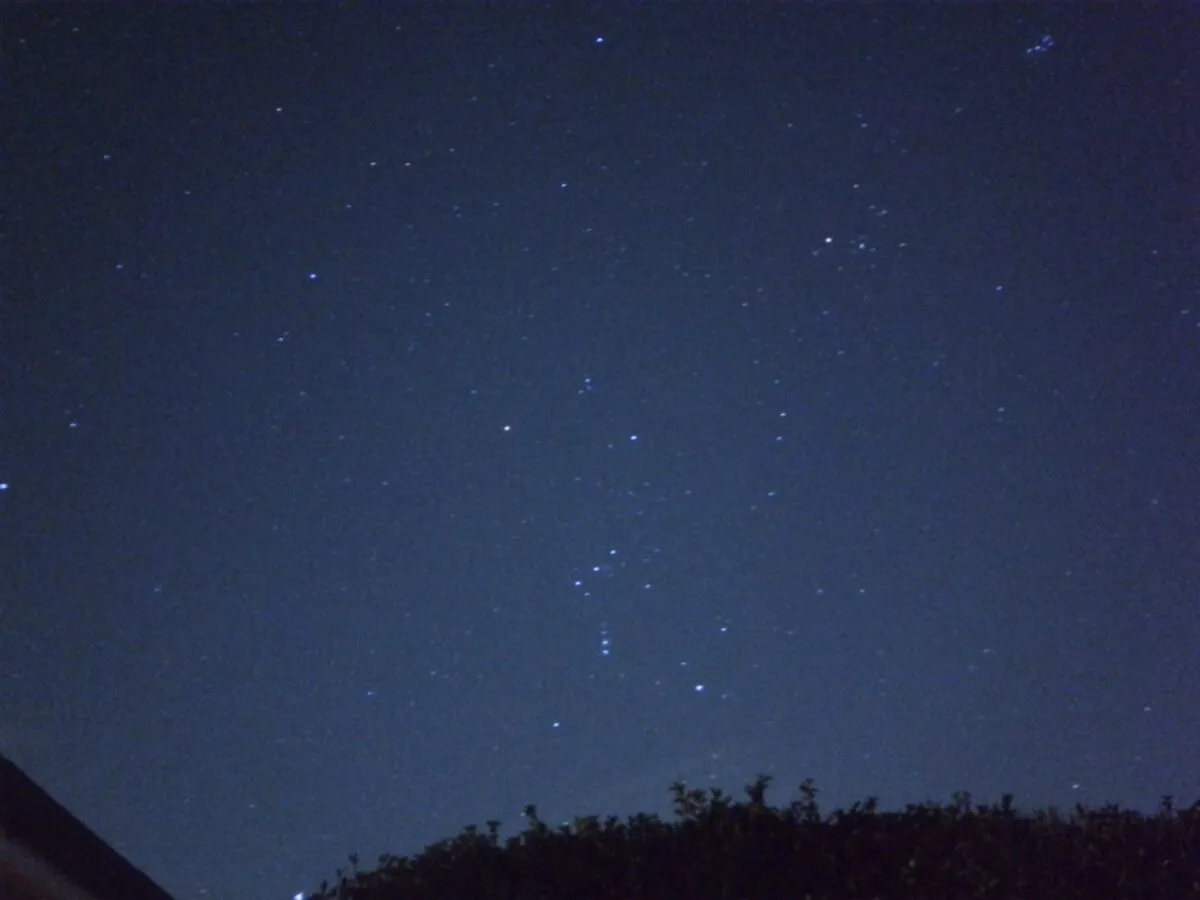
Especially if the expectation was to see breathtaking views through their new telescope as good as the Hubble Space Telescope and Voyager images printed on its box.
The actual night sky itself might be against them, too. They might want to see Saturn’s rings, or the ice caps of Mars, but those planets might not be in the sky that night.
Here we’ll take you on a short tour across the Christmas night sky, helping you to munch your way through a celestial selection box of cosmic delights to inspire and help you appreciate the reality of sky-watching with your new telescope.
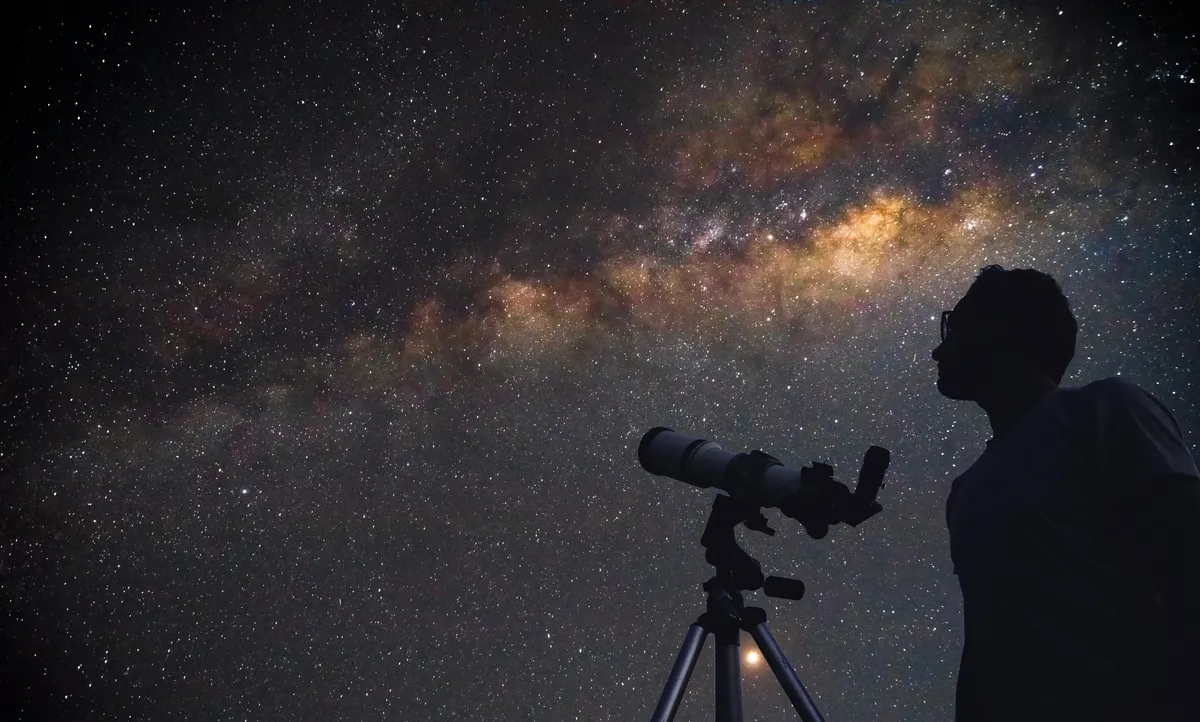
Getting ready for Christmas night sky stargazing
You can’t just swing your telescope around the night sky at random and expect amazing things to appear in the view.
Dspite what some adverts would have you believe, your new telescope won’t leap from one cool object to another all on its own.
You’re going to need some help to point it at the galaxies, star clusters and planets of the Solar System you’ve read about for so long.
For a bit of extra help, read our guide on how to spend your first night with a telescope.
Astronomy books
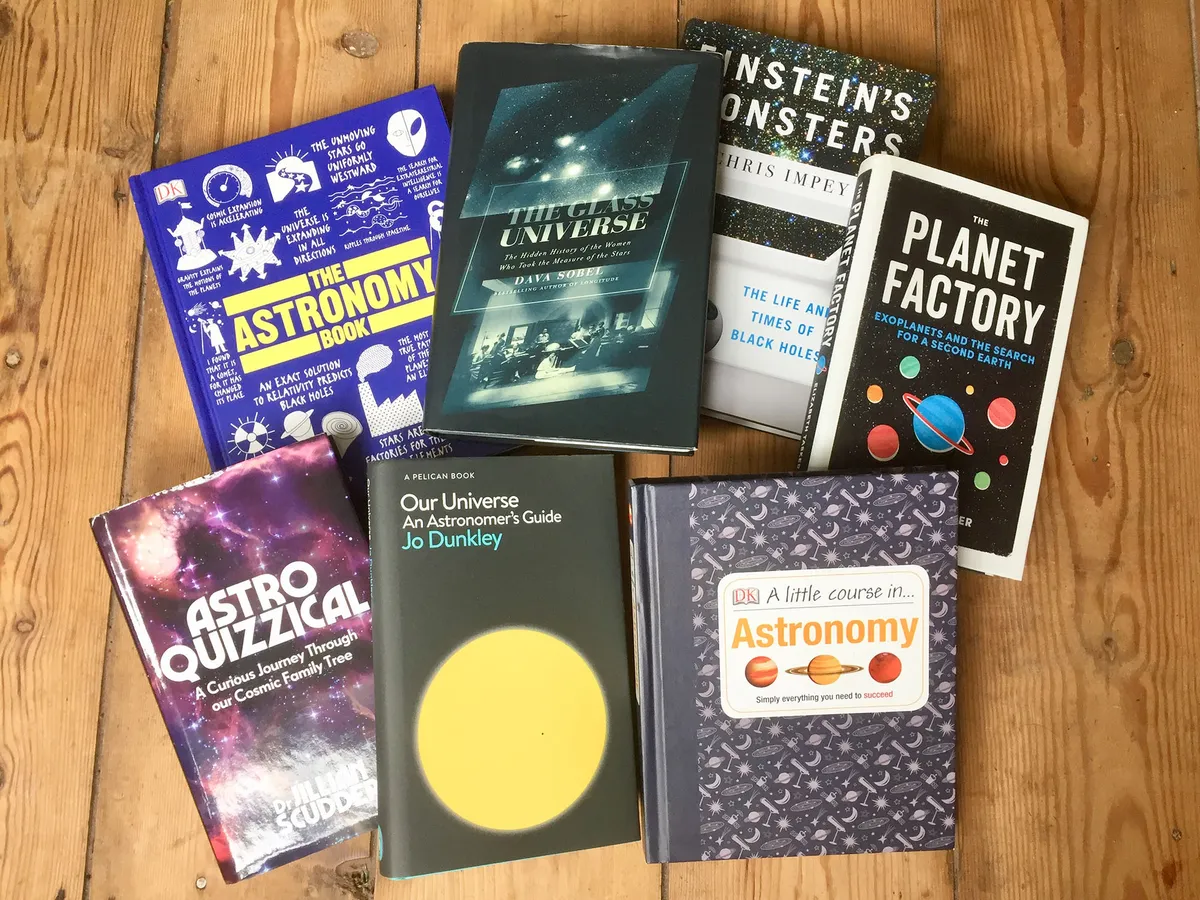
There are many great space and astronomy books to help a new telescope owner find their way around the sky. Turn Left At Orion by Guy Consolmagno is a classic that has helped beginners over the years.
Incidentally, you might want to consult Consolmagno's top 12 astronomy sights for Christmas.
It’s full of easy-to-use star charts that will show you exactly where to find many deep-sky objects.
It’s illustrated with realistic sketches instead of photographs to show you what you will actually see through your eyepiece.
There are also several paperback-sized guides to the sky for the year ahead, such as Collins’ Stargazing, which features monthly charts and information about astronomical events, and of course our own special issue publication, The Astronomer’s Yearbook.
Perhaps you could purchase one online and download it to your device.
Star charts
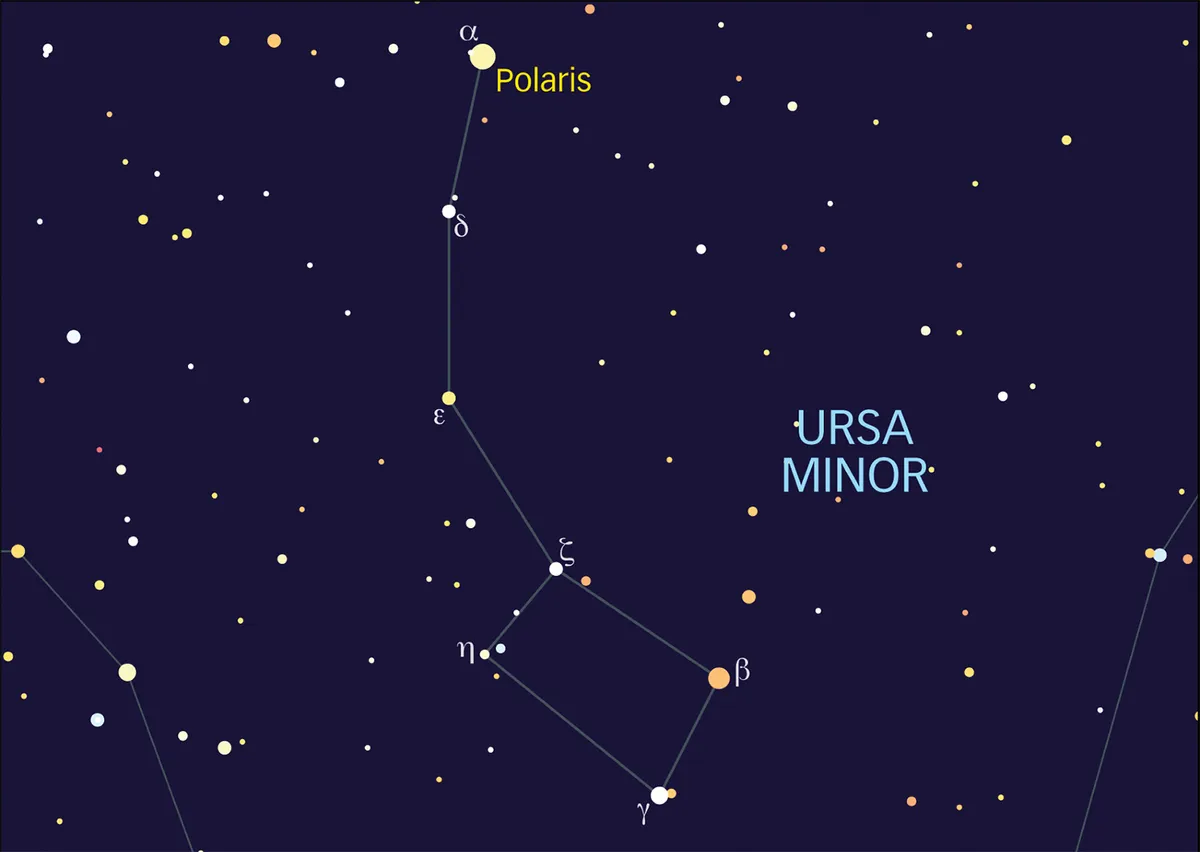
Star charts are maps of the night sky and you will find them in magazines like BBC Sky at Night Magazine, astronomy books and online too.
At first glance they can look confusing, covered with dots, lines and symbols, but are easy to use once you get started.
You’ll find constellations, star clusters, galaxies and nebulae are represented by different coloured shapes, each one labelled to help you identify it.
Find your way around by comparing what’s on the chart with what you see in the sky above you.
Astronomy smartphone apps
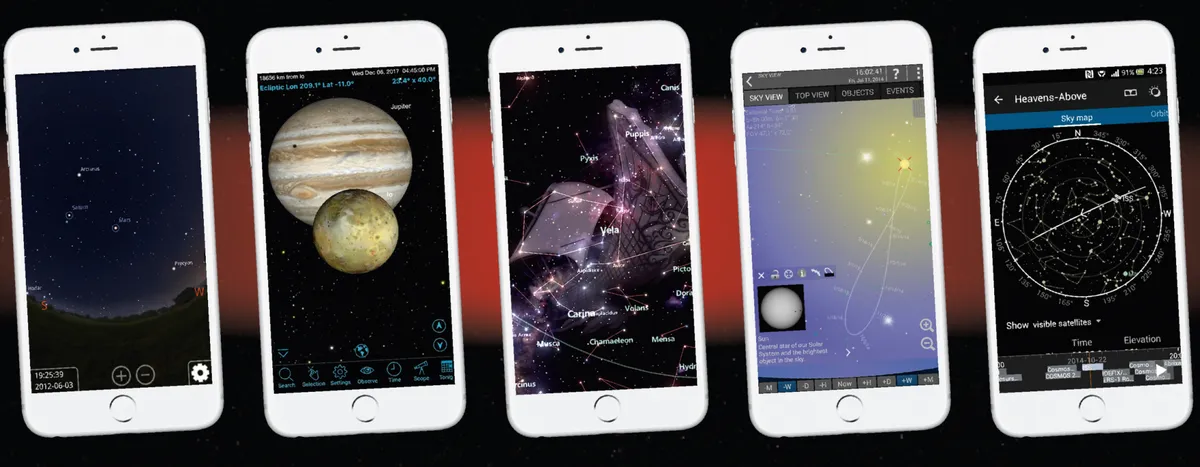
Many astronomers use their mobile phones and tablets to help them find their way around the sky.
There are many astronomy apps available that use GPS to pinpoint the user’s location on Earth and show them what they can see in the night sky above at that time, or any other date or time they choose.
For more on this, read our guide to smartphone astronomy apps.
Dark-adapted vision

Even if you and your new instrument are ready to begin touring the Universe, your eyes won’t be.
If you go outside and look through your telescope right away, your eyes won’t have had time to get used to darkness.
But after a period of ‘dark adaptation’ your eyes will have gone through both physical and chemical changes that enable them to gather more faint starlight, and the views through your scope will be better.
Be patient, avoid using torches unless it's a red light torch, and if you can, turn your phone's screen red.
Find out more about preparing your eyes for stargazing with our guide to averted vision.
Now that we're ready to go, let's get on with our astronomy tour of the Christmas night sky.
Spend time taking in our 5 Christmas Night night-sky targets, then head back indoors for a turkey sandwich and another cup of mulled wine.
5 objects to observe on Christmas Night 2023
Orion, the Moon, the Pleiades and Jupiter
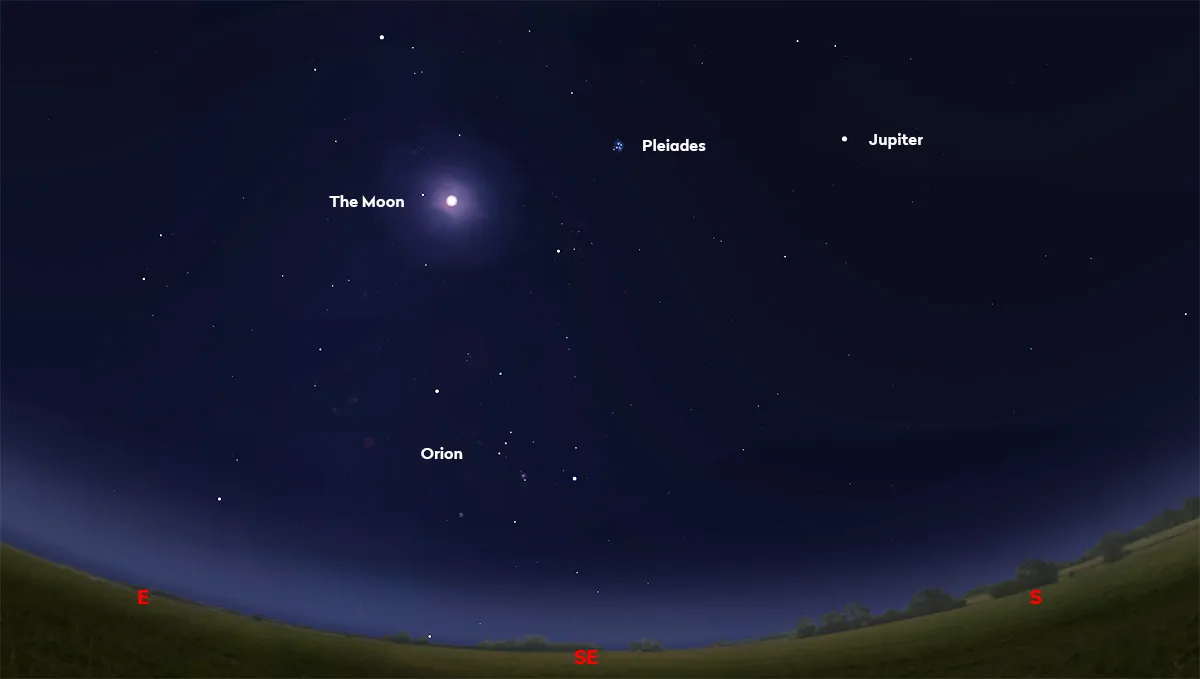
Look towards the southeast at about 20:00 UTC on Christmas night and you'll see the constellation of Orion sitting prominently in the sky.
Above it will be shining a bright Moon, and if you look across to the right you should just about see the Pleiades open star cluster among the lunar glare.
Keep scanning to the right and you'll see the planet Jupiter, which will look like a bright star to the naked eye.
Get out your telescope and see if you can spot its Galilean Moons, which will appear as tiny dots surrounding the planet.
The Orion Nebula
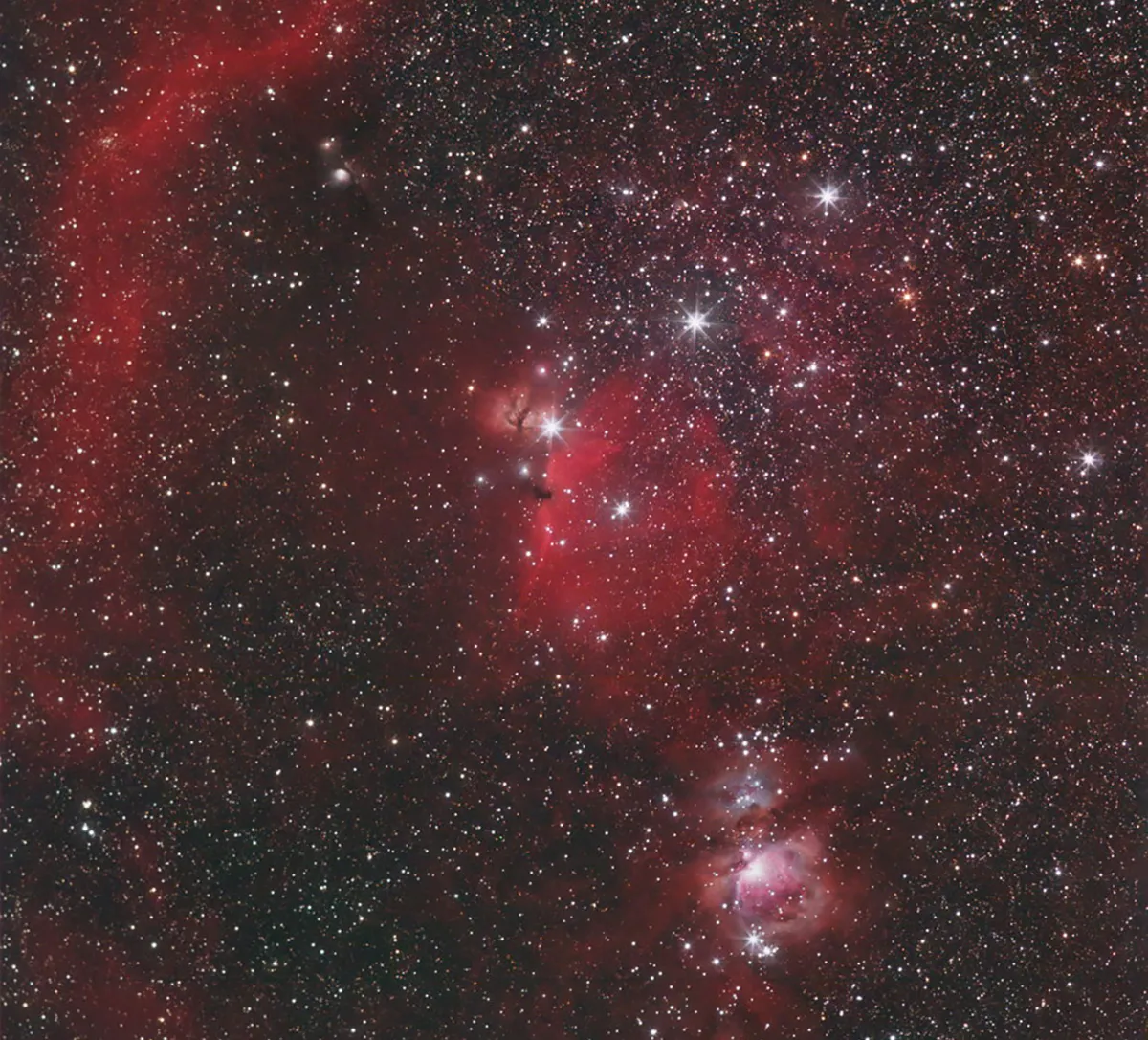
Beneath Orion’s famous Belt, in the centre of his Sword, lies M42, the Orion Nebula. This is a glowing cloud of dust and gas, a ‘stellar nursery’ 1,400 lightyears from Earth, where stars are being born. It’s one of the most beautiful objects in the sky and is visible as a small smudge to the naked eye – when that sky is dark.
M42 will rise in the east at around 18:00 UT and will be visible in the south around 23:00UT. See if you can pick out the Trapezium, a tiny quartet of pinprick stars at its heart, which can be seen easily with those higher magnification eyepieces.
For more advice on observing Orion with your telescope, read our guide to the best targets to see in the Orion constellation.
The Pleiades
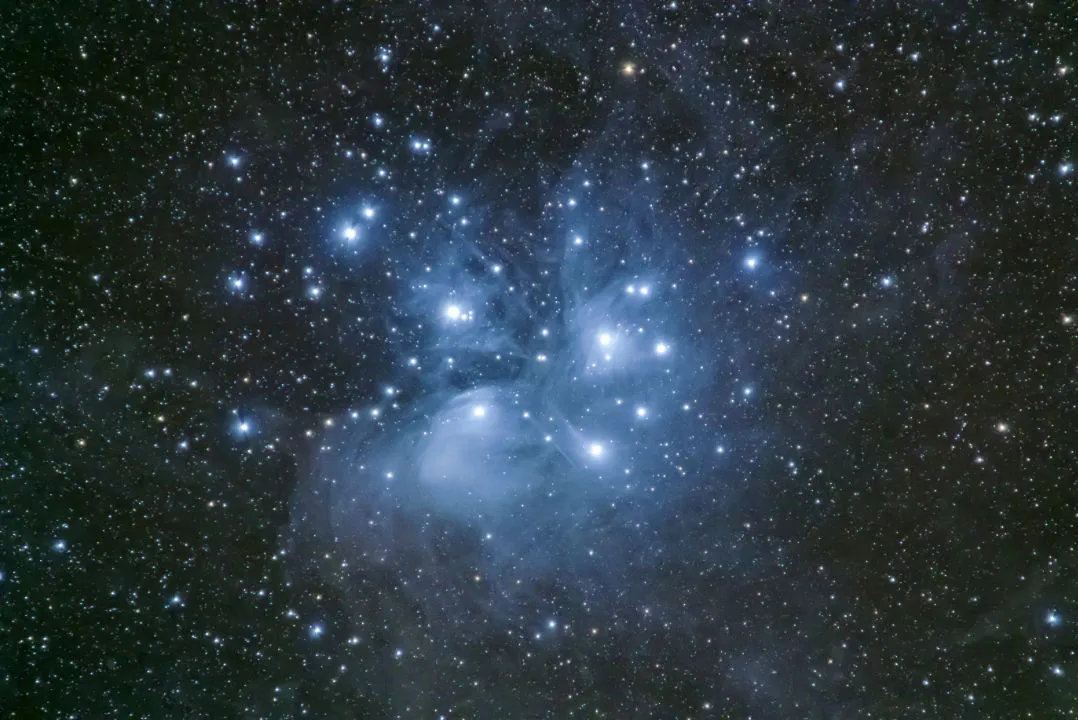
Probably the most famous star cluster in the sky, the Pleiades will be a real “Wow!” sight on Christmas Night, visible in the southeast around 19:30 UT.
At 430 lightyears from Earth, the Pleiades – also known as ‘The Seven Sisters’ because of its seven stars that are visible to the naked eye – is an easy observing target.
Through your new telescope its myriad stars will glitter like tiny diamonds at low magnification, looking like a miniature Plough, and higher magnifications will fill and even overflow your field of view with a bewildering number of stars, sparkling like chips of shattered ice.
When you look at the Pleiades on a dark night you’ll see how astonishingly beautiful it is.
Perseus Double Cluster

Lying between the 'W' shape of the constellation Cassiopeia and the upside-down 'Y' of Perseus, this deep-sky object will be a stunning sight high in the sky on Christmas night.
Even your new telescope’s lowest magnification eyepiece will give you a glorious view of the Double Cluster, looking like two piles of glittering dust shining side by side; while higher magnification will reveal them as containing too many stars to count.
Finding and observing the Double Cluster helps newcomers understand one of the basics of astronomy; just because two objects look close in the sky doesn’t mean they are – one of the clusters is much further away than the other.
Sirius

Finally we come to Sirius, the brightest star in the sky. It’s easy to find – Orion’s Belt points straight down to it – and on frosty winter nights it looks like a finely-cut diamond flashing above the treetops.
Look for it in the south-southeast around 23:00 UT just below and to the left of Orion on 25 December.
You might think that if you swing your new telescope towards it, Sirius will look bigger, but it will still just be a point of light. So why bother?
Because through your telescope the star’s twinkling will be greatly enhanced.
You’ll see it flashing and sparkling like crazy in red, blue and gold; it’s a lovely sight to see. For more on this, read our guide Why do stars twinkle?
It is also possible to photograph the changing colours of Sirius.
If you're new to astronomy, BBC Sky at Night Magazine is out every month and features beginners' guides to the best targets to view in the night sky.
Find out how to subscribe to BBC Sky at Night Magazine.
